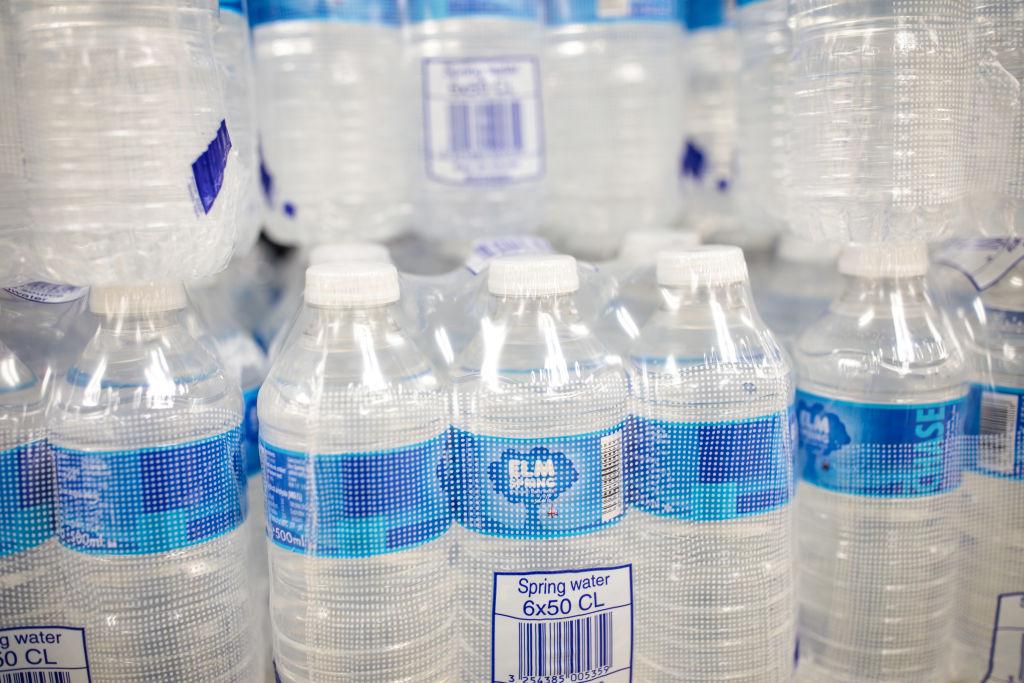It’s always good to be prepared for a natural disaster. There’s never a better time to stock up on the essentials that will keep you and your family safe than now.
Don’t wait for panic to ensue before you head to your local grocery store to stock up; chances are, everybody will have the same idea by then and stocks might be low. Instead, do as the survival experts would, and plan your emergency food stash in advance.
“If you’re stockpiling foods before a crisis,” as per
Skilled Survival, “it may be months or years before you use them.” That means you need long-lasting foods in your pantry, but don’t fret, as here are 13 of the most essential items for your stash, listed below.
Stay ready so you don’t have to get ready!
1. Water
This pantry item is survival 101.
Healthline advises that you may be susceptible to the effects of dehydration after just a couple of days without water. So make sure you have at least a three-day supply, accounting for 1 gallon (approx. 4 liters) of water per day for each family member.
Sports drinks are great, too; they contain electrolytes and carbohydrates for fast rehydration.
2. Canned Fruits and Veggies
These can be eaten straight out of the can and have a long shelf life. In the absence of fresh fruits and veggies, the canned variety is second best! Plus, they’re tasty, and who said comfort has to go out the window in a survival situation?
3. Canned Meat and Fish
Canned meats and fish usually have a shelf life of over two years. They will help you remain strong, healthy, and alert in a crisis. This should take pride of place in your emergency stash. According to
Verywell Fit, you should be stocking up on sardines, which are particularly rich in essential omega-3 oils.
4. Canned Soup
Canned soups are a survivalist’s staple. They’re a meal in one and can even be eaten straight from the can. Low-salt brands are even pretty healthy, and soup, if you have a means to warm it, could provide some much-needed comfort in a dire situation.
5. Peanut Butter
Peanut butter is not only delicious but full of useful calories, healthy fats, and protein. You can keep peanut butter on the shelf, unrefrigerated, for a long time. Emergency snacking made easy.
6. Crackers
While bread will go moldy, crackers can last for months even after the box is open (just seal them in an airtight container). Whole-wheat or whole-grain crackers are your best choice, nutritionally speaking. Your sandwich filling may look a little odd squashed between two crackers rather than two slices of bread, but when there’s chaos outside, this could be the best solution.
7. Whole-grain Cereal
Meals in a can will go so far, but it’s great to have snacks on hand in a crisis. Whole grain cereals have enough fiber to tide you over until the next big meal. Think about stocking up on single-serving packets, or store your cereal in an airtight container so that it doesn’t get stale after being opened.
8. Shelf-stable Milk and Juice
Shelf-stable dairy (and non-dairy) milk has been packaged so it doesn’t need to be refrigerated until it’s opened. Canned juice is also great for your emergency pantry because it can satisfy your body’s potassium, vitamin, and folic acid needs when access to fresh fruit is limited.
9. Baby Food and Formula
If there’s a little one in your family, then this item is essential. Breastfed infants, of course, should continue breastfeeding, but keep a stash of formula and long-life baby foods on standby. In a pinch, baby food could also provide adults with a few much-needed extra calories, too!
10. Granola Bars
Granola bars are an excellent source of fast energy and protein. Kids will love them too (there’s only so many crackers you can stomach, right?). According to
Time, look out for bars that contain dates, almonds, chia seeds, and coconut for maximum nutritional content.
Nuts and trail mix make for great long-lasting snacks, too.
11. Dried Fruit
If access to fresh fruit becomes unavailable, dried fruit can provide as much fiber and potassium as its canned counterpart. Plus, it’s portable and will satisfy your sweet tooth.
12. Multivitamins
You truly never know how long it will be before your access to fresh food is reinstated after an emergency. Put multivitamins in your stash to avoid the risk of becoming vitamin deficient. According to
Real Simple, buy a brand that contains omega 3s and folate for complete coverage.
13. Sugar, Salt, and Pepper
If you’re a dedicated survivalist, then you might even have a grill or propane stove in storage, allowing you to cook even if the power goes out.
If you do, then some simple condiments like sugar, salt, and pepper are a no-brainer. They will make a huge difference to the flavor of cooked food. Your emergency pantry doesn’t have to be bland, after all.
Last but not least, remember that in order to store your food efficiently and ensure its longest possible shelf life, keep food items in covered, airtight containers.
If left to fend for yourself and your family, this thoughtful approach to preparing your emergency food stash could very well mean the difference between struggle and survival. So, make like a scout and “be prepared!”




















